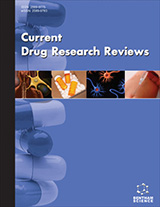Abstract
Breast cancer (BC) is accountable for a large number of female-related malignancies that lead to lethality worldwide. Various factors are considered in the occurrence of BC, including the deregulation of cancer stem cells (CSCs) and epithelial-mesenchymal transition (EMT). Genetic factors such as microRNAs (miRs) are crucially responsible for BC progression and aggressiveness.
Hence, the association of miRs and EMT regulators (e.g., Wnt signaling pathway) is of importance. In the present review, we accurately discussed this interplay (interaction between Wnt and miRs) concerning cell - invasion, -migration, -differentiation, -chemoresistance, survival, and-proliferation, and BC prognosis. The putative therapeutic agents, multidrug resistance (MDR) evade, and possible molecular targets are described as well.
Graphical Abstract
[http://dx.doi.org/10.1186/s12935-021-01906-y] [PMID: 33858433]
[http://dx.doi.org/10.1002/ptr.7033] [PMID: 33569875]
[http://dx.doi.org/10.1016/S1470-2045(20)30741-5] [PMID: 34000244]
[http://dx.doi.org/10.1016/j.biopha.2020.110590] [PMID: 32768885]
[http://dx.doi.org/10.1371/journal.pone.0068089] [PMID: 23840816]
[http://dx.doi.org/10.1016/j.steroids.2018.11.014] [PMID: 30503385]
[http://dx.doi.org/10.1038/jhg.2016.89] [PMID: 27439682]
[http://dx.doi.org/10.3390/ijms20194940] [PMID: 31590453]
[http://dx.doi.org/10.3389/fimmu.2019.02854] [PMID: 31921125]
[http://dx.doi.org/10.3390/curroncol28020134] [PMID: 33917520]
[http://dx.doi.org/10.1002/ptr.6905] [PMID: 33051921]
[http://dx.doi.org/10.1038/s41419-020-02954-4] [PMID: 32929060]
[http://dx.doi.org/10.1038/ncomms6406] [PMID: 25406648]
[http://dx.doi.org/10.1038/s41568-021-00353-1] [PMID: 33953369]
[http://dx.doi.org/10.1016/S1470-2045(18)30418-2] [PMID: 30191850]
[http://dx.doi.org/10.3322/caac.21654] [PMID: 33433946]
[http://dx.doi.org/10.1016/S1470-2045(07)70074-8] [PMID: 17329194]
[http://dx.doi.org/10.1016/j.semcancer.2018.07.007] [PMID: 30059727]
[http://dx.doi.org/10.1007/s13577-015-0126-2] [PMID: 26573286]
[http://dx.doi.org/10.21873/invivo.11965] [PMID: 32606140]
[http://dx.doi.org/10.1186/s12964-019-0419-2] [PMID: 31462314]
[http://dx.doi.org/10.3390/ijerph17062078] [PMID: 32245065]
[http://dx.doi.org/10.1016/j.omtn.2020.01.030] [PMID: 32160712]
[http://dx.doi.org/10.1186/1472-6882-14-192] [PMID: 24935101]
[http://dx.doi.org/10.1016/S1470-2045(19)30026-9] [PMID: 30842061]
[http://dx.doi.org/10.1038/nrendo.2015.185] [PMID: 26503674]
[http://dx.doi.org/10.1002/jcp.29396] [PMID: 31724738]
[http://dx.doi.org/10.1186/s12935-020-01716-8] [PMID: 33413418]
[http://dx.doi.org/10.2741/3824] [PMID: 21196267]
[http://dx.doi.org/10.1016/j.canlet.2012.04.020] [PMID: 22554710]
[http://dx.doi.org/10.5966/sctm.2014-0020] [PMID: 24904174]
[http://dx.doi.org/10.1016/j.biocel.2019.01.015] [PMID: 30772480]
[http://dx.doi.org/10.1080/13813455.2020.1828482] [PMID: 33040642]
[http://dx.doi.org/10.1016/j.jnutbio.2012.03.002] [PMID: 22704055]
[http://dx.doi.org/10.15557/CGO.2018.0012]
[http://dx.doi.org/10.1007/978-1-4939-2519-3_1] [PMID: 26040679]
[http://dx.doi.org/10.2147/CMAR.S35171] [PMID: 23986650]
[http://dx.doi.org/10.1016/j.bbrc.2014.09.069] [PMID: 25261721]
[http://dx.doi.org/10.1007/s10555-016-9644-y] [PMID: 27866304]
[http://dx.doi.org/10.1016/0092-8674(82)90409-3] [PMID: 6297757]
[PMID: 25995628]
[http://dx.doi.org/10.1002/jcp.29327] [PMID: 31637721]
[http://dx.doi.org/10.1016/j.lfs.2020.117547] [PMID: 32173311]
[http://dx.doi.org/10.1016/j.cell.2012.05.012] [PMID: 22682243]
[http://dx.doi.org/10.1016/j.tcb.2018.08.005] [PMID: 30220580]
[http://dx.doi.org/10.1038/s41392-020-0136-8] [PMID: 32300104]
[http://dx.doi.org/10.3390/ijms19030652] [PMID: 29495357]
[http://dx.doi.org/10.3390/cancers12040951] [PMID: 32290543]
[http://dx.doi.org/10.34172/apb.2020.042] [PMID: 32665892]
[PMID: 26442763]
[http://dx.doi.org/10.2174/1381612825666191112142943] [PMID: 31721699]
[PMID: 22579961]
[http://dx.doi.org/10.1186/s13045-017-0471-6] [PMID: 28476164]
[http://dx.doi.org/10.3389/fimmu.2019.02872] [PMID: 31921137]
[http://dx.doi.org/10.1515/biol-2016-0013]
[http://dx.doi.org/10.1016/0092-8674(93)90529-Y] [PMID: 8252621]
[http://dx.doi.org/10.1016/j.biopha.2020.111214] [PMID: 33450488]
[http://dx.doi.org/10.3389/fgene.2020.562114] [PMID: 33343622]
[http://dx.doi.org/10.1126/scisignal.2001744] [PMID: 22045851]
[http://dx.doi.org/10.3390/biom10071040] [PMID: 32664703]
[http://dx.doi.org/10.3892/ijo.2016.3435] [PMID: 26984519]
[http://dx.doi.org/10.1038/nature12108] [PMID: 23644459]
[http://dx.doi.org/10.3390/ijms20102535] [PMID: 31126043]
[http://dx.doi.org/10.1038/cr.2016.13] [PMID: 26794868]
[http://dx.doi.org/10.1038/s41392-020-00261-0] [PMID: 32759948]
[http://dx.doi.org/10.1080/14737175.2021.1923479] [PMID: 33910446]
[http://dx.doi.org/10.1016/j.molmed.2014.06.005] [PMID: 25027972]
[http://dx.doi.org/10.1155/2020/8029721] [PMID: 32733559]
[http://dx.doi.org/10.1007/s40291-020-00447-w] [PMID: 32067191]
[http://dx.doi.org/10.1016/j.ncrna.2016.07.001] [PMID: 30159408]
[http://dx.doi.org/10.1016/j.abst.2019.05.001]
[http://dx.doi.org/10.1007/s40291-019-00439-5] [PMID: 31758333]
[http://dx.doi.org/10.1155/2013/290568] [PMID: 23533807]
[http://dx.doi.org/10.1002/jcp.27839] [PMID: 30488443]
[PMID: 32990537]
[http://dx.doi.org/10.3390/molecules25215218] [PMID: 33182462]
[http://dx.doi.org/10.1016/j.arcmed.2019.02.001] [PMID: 30792164]
[http://dx.doi.org/10.1016/j.ijbiomac.2021.01.042] [PMID: 33440210]
[http://dx.doi.org/10.1056/NEJMoa1913948] [PMID: 33471991]
[http://dx.doi.org/10.18632/oncotarget.5873] [PMID: 26497855]
[http://dx.doi.org/10.1038/onc.2014.151] [PMID: 24931170]
[http://dx.doi.org/10.1007/s10549-014-3040-5] [PMID: 25001613]
[http://dx.doi.org/10.1002/cam4.3183] [PMID: 32543775]
[http://dx.doi.org/10.1080/21691401.2019.1594000] [PMID: 30942630]
[http://dx.doi.org/10.18632/oncotarget.18422] [PMID: 29050223]
[http://dx.doi.org/10.18632/oncotarget.14662] [PMID: 28099945]
[http://dx.doi.org/10.2147/CMAR.S255419] [PMID: 32801869]
[PMID: 31933739]
[http://dx.doi.org/10.1177/1010428317702899] [PMID: 28621239]
[http://dx.doi.org/10.1038/s41467-017-01059-5] [PMID: 29051494]
[http://dx.doi.org/10.1038/s41388-018-0445-3] [PMID: 30093634]
[http://dx.doi.org/10.1111/cas.14133] [PMID: 31325197]
[http://dx.doi.org/10.1016/j.amjms.2016.05.002] [PMID: 27524218]
[http://dx.doi.org/10.1038/s41598-019-56571-z] [PMID: 31913290]
[http://dx.doi.org/10.1080/09168451.2019.1584521] [PMID: 30950326]
[http://dx.doi.org/10.1111/jcmm.15317] [PMID: 32558224]
[http://dx.doi.org/10.3892/ijmm.2019.4081] [PMID: 30720046]
[http://dx.doi.org/10.7554/eLife.01977] [PMID: 25406066]
[http://dx.doi.org/10.1177/1533033819827309] [PMID: 30755102]
[http://dx.doi.org/10.1016/j.biopha.2018.10.114] [PMID: 30551356]
[http://dx.doi.org/10.3892/or.2015.4502] [PMID: 26707142]
[http://dx.doi.org/10.1186/s12885-017-3298-1] [PMID: 28464803]
[http://dx.doi.org/10.1080/15384101.2020.1815147] [PMID: 33023375]
[http://dx.doi.org/10.1158/1535-7163.MCT-12-0232-T] [PMID: 22821148]
[http://dx.doi.org/10.18632/oncotarget.9734] [PMID: 27323393]
[http://dx.doi.org/10.1016/j.gene.2013.11.035] [PMID: 24315818]
[http://dx.doi.org/10.1007/s13277-015-4513-9] [PMID: 26758430]
[http://dx.doi.org/10.1172/JCI65871] [PMID: 23321667]
[http://dx.doi.org/10.1002/jcp.28465] [PMID: 30945294]
[http://dx.doi.org/10.3892/or.2015.3965] [PMID: 25955111]
[http://dx.doi.org/10.1016/j.lfs.2020.118854] [PMID: 33278391]
[http://dx.doi.org/10.1111/jcmm.14515] [PMID: 31273950]
[PMID: 32329856]
[http://dx.doi.org/10.1002/jcp.27056] [PMID: 30191949]
[http://dx.doi.org/10.1016/j.celrep.2017.02.016] [PMID: 28249169]
[http://dx.doi.org/10.1038/s41598-017-18612-3] [PMID: 29321644]
[http://dx.doi.org/10.18632/oncotarget.18171] [PMID: 29156693]
[http://dx.doi.org/10.1002/jgm.3129] [PMID: 31693779]
[PMID: 23613467]
[http://dx.doi.org/10.18632/oncotarget.8722] [PMID: 27081088]
[http://dx.doi.org/10.33263/BRIAC96.517521]
[http://dx.doi.org/10.3390/molecules26113157] [PMID: 34070502]
[PMID: 30779084]
[http://dx.doi.org/10.2147/CMAR.S270200] [PMID: 33061571]
[http://dx.doi.org/10.1016/j.jconrel.2011.06.026] [PMID: 21723890]
[http://dx.doi.org/10.1080/15384047.2018.1529101] [PMID: 30336071]
[http://dx.doi.org/10.1038/srep28436] [PMID: 27341528]
[http://dx.doi.org/10.3389/fonc.2020.00948] [PMID: 32733789]
[http://dx.doi.org/10.1111/jcmm.15261] [PMID: 32307830]
[PMID: 28469804]
[http://dx.doi.org/10.1186/s12935-020-01247-2] [PMID: 32518523]
[http://dx.doi.org/10.1016/j.yexcr.2016.01.004] [PMID: 26790955]
























